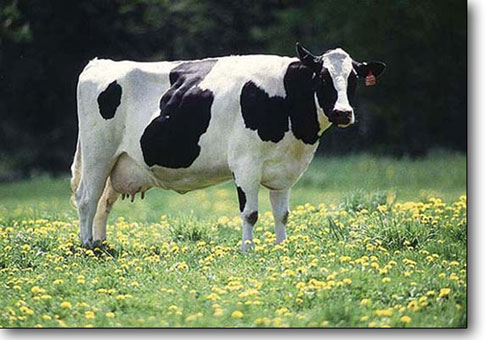|
| ||
| Udder addiction
by Chef Boy Ari If I were to have watched the Super Bowl, I would have been among the great herd that did so for the commercials, to see what the producers did with their $2.5 million, 30-second opportunities to address half a nation. But even if I had watched the Super Bowl, I still wouldn’t have seen what would probably have been the most interesting commercial of the year, because ABC declined to run it. The commercial depicted a club scene with hot young women bouncing to music. Encouraged by guys in baseball caps, the women lift their shirts, revealing cow udders where human mammary glands should be. The guys go crazy, taking pictures with their cell phones and reaching for the bovine-style breasts, which begin leaking milk. The scene quickly degenerates into a milk orgy, with guys slurping milk from glasses, bottles, tubes, and the source – sometimes four guys on four teats attached to a single udder. Everyone is intoxicated on milk, which pools on the floor, soaks through tank tops, and covers faces and baseball caps while the insatiable crowd roars for more. At the end of the spot, production credit is given to People for the Ethical Treatment of Animals (PETA), and viewers are directed to www.milkgonewild.com, where we can watch the video again and learn what the point is. It wasn’t for lack of funds that this commercial didn’t air, but rather, according to ABC, because the commercial “falls outside the boundaries of good taste.” While commercials about crotch-biting dogs, flatulent horses and erectile dysfunction make it past the censors, poking fun at our national herd’s obsession with breasts doesn’t. Perhaps the spot hit too close to home, too soon after Janet Jackson’s “wardrobe malfunction.” On the other hand, the Super Bowl commercials suffered no shortage of beer, pizza, automotive transport and other commodities being sold with the help of teasing cleavage. (I watched the commercials last week on Ifilm.com.) If you go to milkgonewild.com, you will learn that PETA views the milk industry as abusive to cows and unhealthy for humans. Footage of factory milk-production facilities, narrated by Alec Baldwin, is compelling. Cows standing cramped, udder-deep in feces, pumped with hormones, treated like milk factories rather than sentient beings. And when the milk runs dry, they are dragged – some can barely walk – off to slaughter. The milk, PETA alleges, contains significant amounts of blood, pus and excrement, not to mention chemicals and hormones that can give breasts to men and allergies to children, among a host of other problems. The website even cites evidence that milk causes, rather than prevents, osteoporosis. It’s no news to me that milk, or any other animal product that’s mass-produced in a factory setting, is inevitably disgusting – in direct proportion to how much you know about it. Eric Schlosser’s Fast Food Nation is one of many publications and movies that show what’s going on in the animal factories, corroborating many of the claims of PETA and Milkgonewild. Animals and workers treated poorly, bodily fluids mixing, contaminating, smelling. While I’m aware of this, I’ve nonetheless continued my consumption of milk, cheese, yogurt, butter and other dairy products with a clear conscience, because I source my ingredients carefully. I know that my milk, which comes from Lifeline Farms in the Bitterroot, comes from cows that are treated with respect, if not gratitude for the food they are producing. But I must admit, the Milkgonewild video made me question my consumption of bovine mammary secretions. No other animal but the human consumes milk products beyond infancy – much less the milk products of a different animal. The censored commercial’s depiction of overgrown boys worshipping hyperinflated mammaries and lapping up the milk is provocative, suggesting that Americans are having trouble weaning themselves – from the tit, from milk, or both. Is the American herd stuck in a state of arrested development? On the other hand, I’m nostalgic enough to see something beautiful in the relationship between man and cow – or yak, or goat, or any other mammal of edible lactation. Humans cannot eat grass, but cows can eat grass, and people can eat cows. People can drink cow’s milk, can build fire from cow’s dung. That’s how many tribes survived on plains and plateaus around the world. And then there is cheese, a veritable apex of human culinary artistry. There is no limit to the forms, applications, production techniques or stories associated with cheese. To deny them would be to deny a part of human history, culture and cuisine with which I’m not prepared to part. Still, I’m shifting my focus from dairy as staple to dairy as art. Dairy as the cream on top. Dairy as extra-special treat. While nutritionists argue about whether milk causes or prevents osteoporosis, few to none will dispute that you can get all the calcium you need from dark green leafy vegetables. I just don’t want kale in my coffee. •
|


